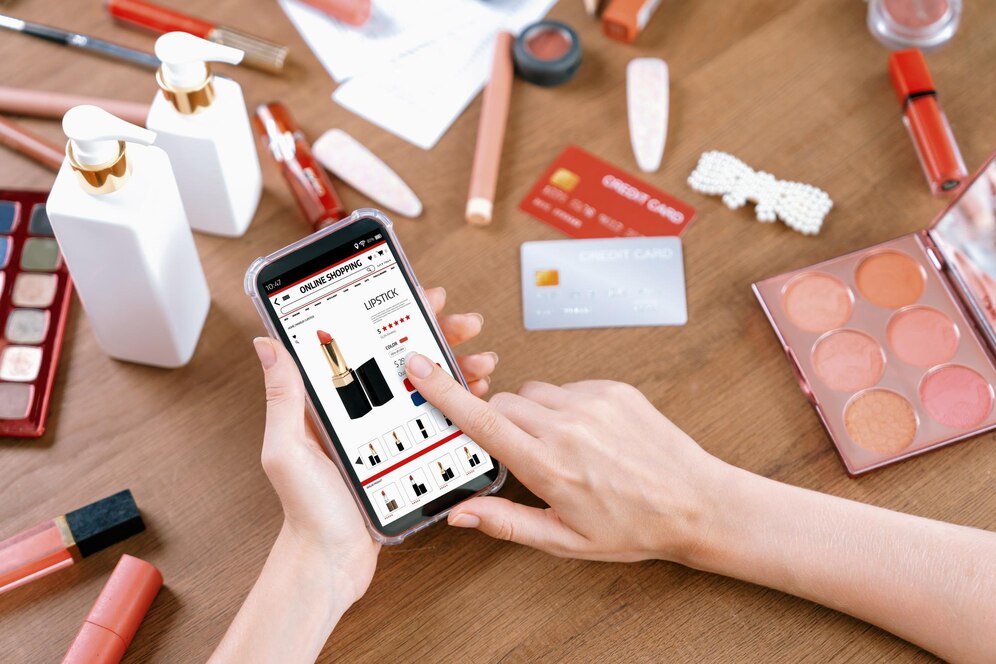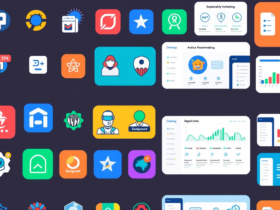The Beauty Industry in 2025: Trends, Growth, and Opportunities in E-Commerce
The beauty industry is a timeless powerhouse. Iconic health and beauty brands like Revlon, Estee Lauder, and Mary Kay have been household names for nearly a century, with roots tracing back to the early 1900s. These legacy brands have shaped the industry for decades, but what’s truly revolutionizing the space today is the rise of e-commerce in the beauty sector.
Once dominated by brick-and-mortar stores in upscale department malls, shopping for beauty and personal care products has transformed into a fully digital experience. Physical stores are no longer the only option—online platforms now reign supreme.
This shift has brought both opportunities and challenges. On one hand, e-commerce beauty brands that may have struggled to break into traditional retail spaces now have a chance to thrive online. On the other hand, consumers are faced with an overwhelming array of choices, from cult-favorite brands to emerging startups. The result? A highly competitive and saturated market where standing out requires more than just great products—it demands staying ahead of the latest trends.
In this article, we’ll explore the current state of the beauty e-commerce industry and highlight the top trends shaping its future in 2025. Whether you’re a brand owner or a consumer, these insights will help you navigate the evolving landscape of online beauty shopping.
The State of the Beauty Industry in 2025
The beauty industry is thriving, and the numbers speak for themselves. By 2029, global beauty e-commerce sales are projected to reach an impressive $338.9 billion, growing at a steady annual rate of 8.4%. This growth reflects not only the increasing popularity of online shopping but also the rapid advancements in technology that enhance the digital shopping experience.
While beauty has always been a cornerstone of self-care and personal expression, the industry is now embracing a more digital-first approach. Innovations like virtual try-ons, live-stream shopping, and online consultations are transforming how consumers interact with beauty brands. These tools offer greater realism, faster processing, and seamless integration with platforms like Instagram, TikTok, and even emerging VR environments, keeping shoppers engaged and satisfied.
Direct-to-consumer (DTC) brands such as Glossier, ColourPop, and The Ordinary continue to lead the charge, introducing groundbreaking products and forming strategic partnerships. Meanwhile, platforms like TikTok Shop are reshaping consumer behavior, boosting visibility for smaller brands, and driving sales through viral trends.
Why the Online Beauty Market Is Both Competitive and Full of Opportunity
Despite the crowded marketplace, there’s still plenty of room for growth. According to a 2023 study by PowerReviews, 35% of consumers reported that 26% to 50% of their online beauty purchases over the past year were products they had never tried before. Even more striking, 31% of consumers said that 51% or more of their online beauty buys were new-to-them products.
These statistics underscore a key truth about today’s beauty shoppers: they’re adventurous and open to experimentation. For cosmetic brands, this means there’s immense potential to capture new audiences and grow market share. However, success hinges on a brand’s ability to build trust, foster community, and stay ahead of the curve with innovative strategies.
How Can Beauty E-Commerce Brands Stand Out?
To differentiate themselves in this competitive landscape, online beauty brands must remain agile and responsive to changing consumer preferences. Keeping up with the latest trends is essential—not just to stay relevant but to create meaningful connections with customers.
From leveraging cutting-edge technology to embracing sustainability and inclusivity, the trends we’ll explore in this article will provide a roadmap for brands looking to thrive in the ever-evolving world of beauty e-commerce. Let’s dive in and uncover the top trends to watch in 2025.
10 Top Beauty E-Commerce Trends to Watch in 2025
The beauty e-commerce industry is evolving rapidly, driven by technological advancements and shifting consumer behaviors. To stay ahead in this competitive market, brands need to embrace the latest trends shaping online beauty shopping. Here are two of the most impactful trends dominating the space in 2025:
1. Influencer Marketing in Beauty E-Commerce
Social media remains one of the most powerful tools for driving engagement and sales in the e-commerce beauty sector. As a result, influencer marketing has become a cornerstone strategy for cosmetics brands looking to boost brand awareness and increase conversions.
Interestingly, the focus is shifting away from mega-celebrities with millions of followers. Instead, brands are increasingly partnering with micro-influencers and even nano-influencers —creators with smaller but highly engaged audiences. Why? Authenticity sells.
A celebrity account might boast four million followers, but only a fraction of those followers may be interested in beauty products. On the other hand, a beauty-focused micro-influencer with just 10,000 followers likely has an audience that’s deeply passionate about skincare, makeup, and related topics. These niche creators offer a more genuine connection with their followers, leading to higher engagement rates and better ROI for brands.
By collaborating with relatable influencers who resonate with their target audience, e-commerce beauty brands can foster trust, drive meaningful interactions, and ultimately boost sales.
2. Augmented Reality (AR) in Beauty Shopping
If you’ve ever used an Instagram or TikTok filter to try on virtual makeup or experiment with different looks, you’ve already experienced augmented reality (AR) in action. In the world of beauty e-commerce, AR is revolutionizing how consumers shop online.
One of the biggest challenges of buying beauty products online is the inability to test them before purchasing. How do you know if that bold red lipstick or foundation shade will suit your skin tone until it’s physically in your hands? Enter virtual try-on technology.
By 2025, AR beauty tools will have become incredibly sophisticated, offering hyper-realistic visuals, AI-driven personalized recommendations, and seamless integration into immersive virtual reality (VR) experiences. Brands like Lancôme are leading the way by allowing customers to use live cameras, upload photos, or explore VR environments to virtually “try on” makeup products.
This innovation not only enhances the shopping experience but also reduces return rates and boosts customer satisfaction. With AR, shoppers can confidently make informed decisions, knowing exactly how a product will look and feel before they buy.
3. The Rise of Self-Care in Beauty E-Commerce
The concept of beauty as self-care gained significant momentum during the stay-at-home era of 2020, and by 2025, it has become a cornerstone of the beauty industry. This trend reflects a deeper focus on mental wellness and holistic beauty practices, with consumers embracing beauty routines that nurture both the mind and body.
Today’s shoppers are gravitating toward ritualistic skincare routines and products that promote relaxation and mindfulness. Think hydrating face masks, nourishing oils, and items formulated with natural ingredients —all designed to create moments of calm in busy lives. Additionally, there’s been a notable rise in demand for skincare and grooming products for men, signaling a cultural shift and an increased emphasis on self-care among male consumers.
In 2025, self-care remains a driving force in the beauty e-commerce space. Brands that fail to incorporate this trend into their offerings risk falling behind in the race to attract new customers and retain existing ones. To stay competitive, online beauty brands should consider curating product collections that align with self-care rituals. For example, creating nighttime skincare sets or self-care-inspired bundles, similar to Tatcha’s popular offerings, can resonate deeply with modern consumers seeking both functionality and emotional well-being.
By tapping into the growing demand for self-care beauty products, brands can build stronger connections with their audience while addressing the evolving needs of today’s conscious and wellness-focused shoppers.
4. The Enduring Appeal of Beauty Subscription Boxes in 2025
Beauty subscription boxes have been a staple in the industry for years, and in 2025, they remain as popular as ever. These curated boxes are evolving to meet modern consumer demands, offering personalized beauty products tailored to individual preferences while also embracing sustainability —a growing priority for many shoppers.
For consumers, beauty subscription boxes provide a convenient way to discover new favorites without the hassle of sifting through countless reviews or navigating overwhelming product catalogs. Each box is thoughtfully curated, taking the guesswork out of finding the “perfect” product. This personalized approach not only enhances the customer experience but also fosters a sense of excitement and discovery.
From a business perspective, adding a subscription service to an e-commerce beauty brand offers significant advantages. By doing so, brands can provide their customers with more personalized beauty options while simultaneously building a reliable stream of recurring revenue. This model strengthens customer loyalty and creates long-term relationships by consistently delivering value directly to their’ doorsteps.
In 2025, beauty subscription boxes are more than just a trend—they’re a strategic tool for brands looking to stand out in a competitive market. By combining personalization, convenience, and eco-friendly practices, these boxes cater to the needs of today’s conscious and time-strapped consumers.
5. Social Commerce: The Game-Changer for Beauty Brands in 2025
The rise of TikTok has transformed the way consumers discover and purchase products, making it an essential platform for beauty brands in 2025. If you’re not actively leveraging TikTok for your brand, you might be missing out on a massive opportunity. Don’t believe us? Just look at the hashtag #TikTokMadeMeBuyIt, which has amassed over 65 billion views this year alone. Simply having a presence on the app can significantly boost product discovery and drive sales for beauty brands.
But TikTok isn’t just about visibility—it’s a full-fledged social commerce powerhouse. The platform offers a suite of tools designed to help businesses of all sizes thrive. From enhanced shopping integrations to in-app checkout options, TikTok makes it easier than ever for consumers to shop without ever leaving the app. Beauty brands can use features like shoppable videos, product links, and video ads to connect with potential customers seamlessly and engagingly.
The best part? TikTok allows brands to meet their audience exactly where they spend most of their time—scrolling through their feeds. This level of convenience and immediacy is what makes social commerce such a powerful trend in the beauty e-commerce industry. By tapping into TikTok’s ecosystem, beauty brands can not only increase their reach but also create authentic connections with shoppers who are ready to buy.
In 2025, social commerce is no longer optional—it’s a must for beauty brands looking to stay competitive and grow their customer base. Whether it’s through viral trends or strategic shopping integrations, TikTok is proving to be a goldmine for brands willing to embrace its potential.
6. Sustainability: The Future of Beauty E-Commerce in 2025
For decades, the cosmetics industry has faced criticism for its environmental impact, particularly due to excessive plastic packaging and wasteful shipping practices. However, in 2025, the industry is undergoing a green transformation as more brands embrace sustainability as a core value. From refillable containers and biodegradable packaging to waterless beauty products, companies are adopting eco-friendly strategies to reduce waste and promote a healthier planet.
This shift isn’t just good for the Earth—it’s also what consumers are demanding. According to a 2025 report by Shorr Packaging, 54% of consumers actively choose products with sustainable packaging, and a 2024 PwC survey revealed that 80% of shoppers are willing to pay more for sustainably produced or sourced goods, with an average premium of 9.7%. These statistics make it clear: eco-conscious beauty products are no longer a niche trend—they’re a necessity.
For beauty e-commerce brands, now is the time to develop authentic sustainability initiatives that resonate with environmentally aware consumers. By investing in greener practices, brands can not only reduce their carbon footprint but also build trust and loyalty among their audience.
7. Hyper-Personalization: Elevating the Beauty Shopping Experience in 2025
Beauty brands have always been at the forefront of innovation, and in 2025, hyper-personalization will take center stage. But what exactly is hyper-personalization? It’s the use of data and automation to deliver tailored experiences that eliminate friction and anticipate customer needs.
Imagine this: A shopper purchases a jar of moisturizer, and just as they’re about to run out, they receive an automated email reminding them to restock. Or, based on their past purchases and browsing behavior, a brand can curate a list of products perfectly suited to their preferences. These small yet impactful touches create a seamless and highly personalized shopping journey.
Some brands are taking personalization even further by offering fully customized products. For instance, Prose provides tailored haircare solutions after customers complete a quick quiz about their hair type, lifestyle, and environment. Similarly, advancements in AI tools now allow brands to analyze real-time skin conditions, delivering hyper-tailored skincare recommendations that adapt to individual needs.
In 2025, hyper-personalization isn’t just a buzzword—it’s a competitive advantage. By leveraging AI-driven personalization and customer data, e-commerce beauty brands can create deeper connections with their audience, boost satisfaction, and drive repeat purchases.
8. Loyalty Programs: Enhancing Customer Engagement in Beauty E-Commerce
Loyalty programs are becoming a cornerstone of personalized shopping experiences and seamless customer engagement in the beauty e-commerce industry. Imagine this: A loyal customer logs into their account to discover a surprise discount or finds a free sample tucked into their latest order. These small yet meaningful gestures not only delight shoppers but also deepen their connection with the brand.
In 2025, loyalty programs are evolving beyond simple rewards. Brands are integrating gamified elements, such as points systems and challenges, to make earning rewards more engaging. Additionally, many programs now include direct links to social commerce platforms, allowing customers to shop and earn rewards without leaving their favorite apps.
But the benefits don’t stop there. Loyalty programs provide brands with valuable insights into consumer behavior and preferences. By tracking purchase patterns and soliciting feedback from top customers, brands can make data-driven decisions that improve their offerings. Most importantly, these programs show your most loyal customers that you value their support, fostering long-term loyalty in an increasingly competitive market.
9. Expanding Omnichannel Offerings for a Seamless Beauty Experience
One of the most significant trends shaping the beauty e-commerce landscape in 2025 is the shift toward omnichannel strategies. Gone are the days when brands could rely solely on digital channels. Today’s beauty enthusiasts crave a blend of online convenience and offline experiences—they want the best of both worlds.
To meet these expectations, many D2C beauty brands are expanding their reach by partnering with retailers, listing products on third-party marketplaces, leveraging social commerce, and hosting experiential retail activations. For example, pop-up shops or interactive in-store events allow customers to test products in person while still enjoying the ease of online ordering.
By adopting an omnichannel approach, brands increase their chances of connecting with the right customer at the perfect moment. In a saturated industry, this strategy is crucial for standing out and offering something truly unique. It’s all about creating a cohesive journey that feels seamless, whether the customer is shopping online, scrolling through social media, or visiting a physical store.
10. Prioritizing Diversity and Inclusion in Beauty
For too long, the beauty industry has fallen short when it comes to representing diverse voices and catering to all skin tones. Think about it: campaigns featuring models who look alike or foundation ranges that exclude certain shades have been far too common. However, thanks to a new generation of socially conscious consumers, diversity and inclusion are now at the forefront of the beauty industry in 2025.
Today’s customers want to see themselves reflected in the brands they love. They’re drawn to companies that celebrate real, attainable beauty rather than unattainable ideals. And the numbers back this up: Over 60% of US consumers say they feel inspired when beauty brands embrace diversity in their marketing efforts.
Inclusive beauty isn’t just a passing trend—it’s a fundamental shift that all brands should adopt if they want to stay relevant and resonate with modern shoppers. From expanding shade ranges to showcasing diverse models, inclusivity is key to building trust and loyalty among today’s discerning consumers.
The Beauty Industry: Looking Ahead
What makes the beauty industry so exciting? The only constant is change. From the rise of micro-influencers to the integration of augmented reality (AR) tools and the growing demand for clean beauty products, there’s always something new on the horizon. But with so many trends emerging, how can brands keep up?
Here’s the good news: While trends may come and go, one thing remains timeless—putting the customer first. Whether you’re operating in beauty e-commerce or any other vertical, success ultimately boils down to creating exceptional experiences that resonate with your audience.
Our advice to e-commerce beauty brands? Focus on building a strong community and delivering the best possible customer experience every single time. When you prioritize your customers’ needs and preferences, the sales will naturally follow. After all, happy customers are your best advocates—and the key to thriving in an ever-evolving industry.
Read also:
E-Commerce: Much More Than Just a Sales Channel





Leave a Reply